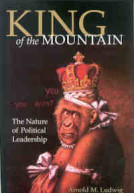Google Books previews are unavailable because you have chosen to turn off third party cookies for enhanced content. Visit our cookies page to review your cookie settings.
Dear Appalachia (Paperback)
Readers, Identity, and Popular Fiction since 1878
Imprint: University Press of Kentucky
Pages: 396
Illustrations: 15 b&w photos, 13 maps
ISBN: 9780813161105
Published: 3rd March 2015
Script Academic & Professional
Pages: 396
Illustrations: 15 b&w photos, 13 maps
ISBN: 9780813161105
Published: 3rd March 2015
Script Academic & Professional
Please note this book may be printed for your order so despatch times may be slightly longer than usual.
You'll be £25.00 closer to your next £10.00 credit when you purchase Dear Appalachia. What's this?
+£4.99 UK Delivery or free UK delivery if order is over £40
(click here for international delivery rates)
Order within the next 10 hours, 27 minutes to get your order processed the next working day!
Need a currency converter? Check XE.com for live rates
(click here for international delivery rates)
Order within the next 10 hours, 27 minutes to get your order processed the next working day!
Need a currency converter? Check XE.com for live rates
Much criticism has been directed at negative stereotypes of Appalachia perpetuated by movies, television shows, and news media. Books, on the other hand, often draw enthusiastic praise for their celebration of the simplicity and authenticity of the Appalachian region.
Dear Appalachia: Readers, Identity, and Popular Fiction since 1878 employs the innovative new strategy of examining fan mail, reviews, and readers' geographic affiliations to understand how readers have imagined the region and what purposes these imagined geographies have served for them. As Emily Satterwhite traces the changing visions of Appalachia across the decades, from the Gilded Age (1865--1895) to the present, she finds that every generation has produced an audience hungry for a romantic version of Appalachia.
According to Satterwhite, best-selling fiction has portrayed Appalachia as a distinctive place apart from the mainstream United States, has offered cosmopolitan white readers a sense of identity and community, and has engendered feelings of national and cultural pride. Thanks in part to readers' faith in authors as authentic representatives of the regions they write about, Satterwhite argues, regional fiction often plays a role in creating and affirming regional identity. By mapping the geographic locations of fans, Dear Appalachia demonstrates that mobile white readers in particular, including regional elites, have idealized Appalachia as rooted, static, and protected from commercial society in order to reassure themselves that there remains an "authentic" America untouched by global currents.
Investigating texts such as John Fox Jr.'s The Trail of the Lonesome Pine (1908), Harriette Arnow's The Dollmaker (1954), James Dickey's Deliverance (1970), and Charles Frazier's Cold Mountain (1997), Dear Appalachia moves beyond traditional studies of regional fiction to document the functions of these narratives in the lives of readers, revealing not only what people have thought about Appalachia, but why.
Other titles in University Press of Kentucky...















